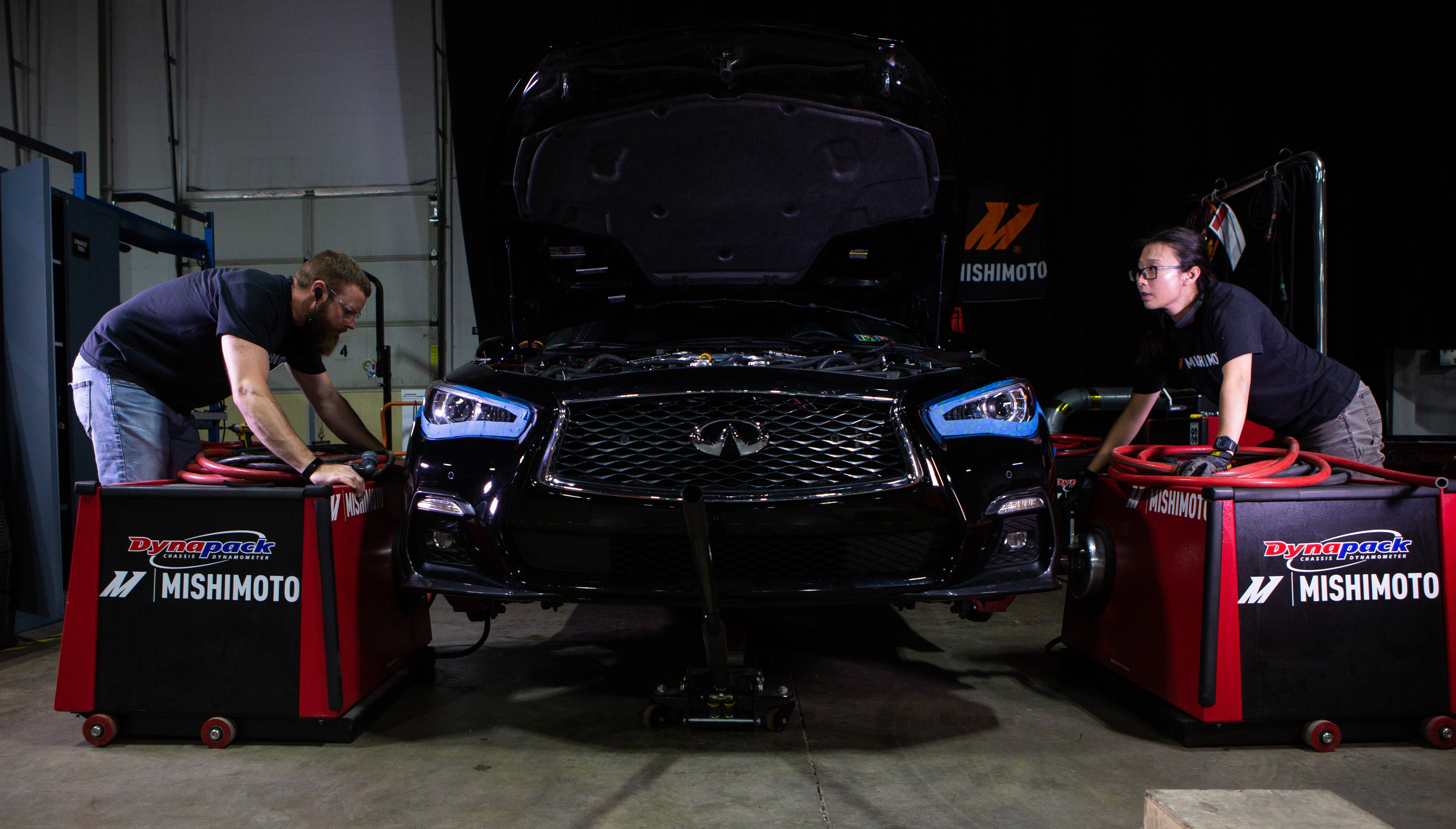
Cool Under Pressure - Performance Heat Exchanger R&D, Part 4 - Testing Results
It's finally showtime. The conductor's wand raises, and each section of the mechanical, techno-EDM fusion orchestra that is the Infiniti Q50 starts effortlessly shredding through the notes. Will the less experienced player fold under the pressure where our musical veterans flourish? Let's find out.
Pump it Up
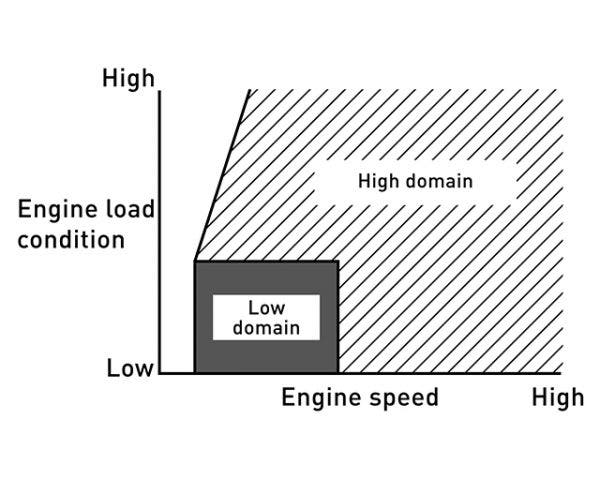
First let's take a quick dive into how the pumps operate in the VR30DDTT's system. These are integral parts for ensuring the heat that is extracted from the intercoolers is properly transported from the charged air to the heat exchanger. The pump, or pumps if you opted for the Red Sport, is electronically controlled by the ECM with two speeds, low and high domain as noted above. The operating speed of the pump is determined by a calculation of the engine's load and speed, or put simply, the manifold pressure and RPM. So, low domain covers most of your typical cruising where the high domain speed is when you put the hammer down.
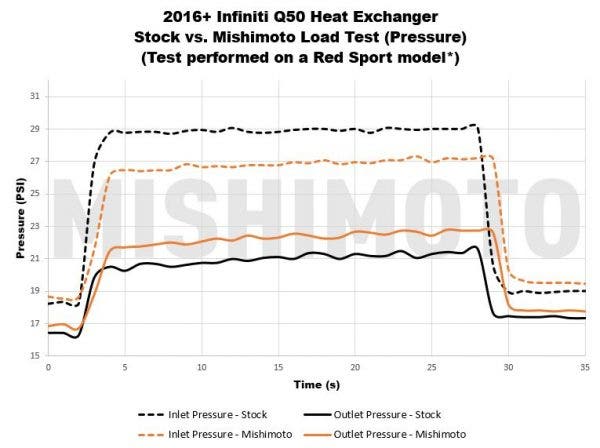
How does the heat exchanger affect the pump speed? I'm glad you asked! During low domain, the size of the heat exchanger core doesn't have that much effect on the cooling capacity since the coolant is cycling through at a low rate. This means it's spending a little more time in the core, so more of a chance to transfer heat.
However, once the rate of fluid increases, it's much more important to have an increased core volume and fin surface area in order to effectively cool the liquid that's now gushing through the system. In short, the larger heat exchanger will be able to keep up with the higher coolant flow.
High Domain
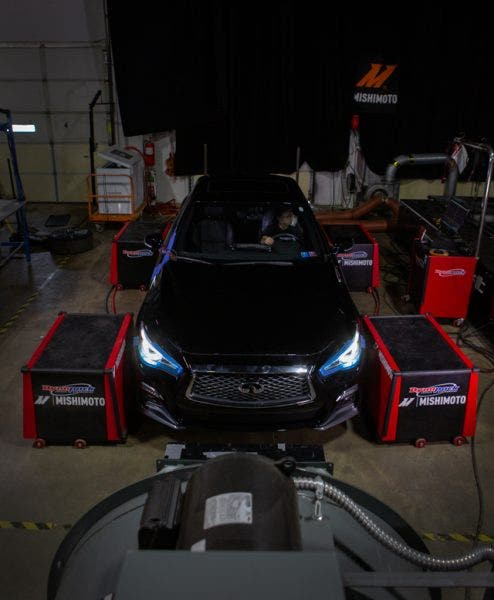
In order to see just how our design affected the cooling during high domain, we strapped our Q50 Red Sport to our Dynapack system for a series of tests. Since the heat exchanger is in essence a radiator, we opted to put the stock unit and our design through the same series of testing.
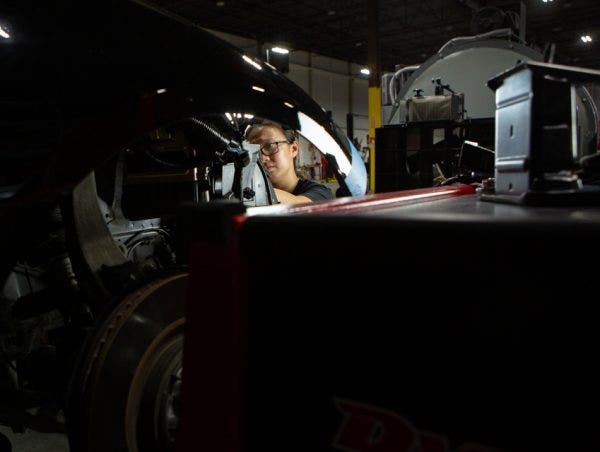
Our first test, known as a load test, is designed to demonstrate the performance of each exchanger at a constant load over an extended period. For our test, the engine was held at 3000 RPM for 25 seconds, which forced the coolant pumps into their high-speed setting so we could monitor how the heat exchanger handles the increased rate of flow, and how core dissipates heat once off throttle.
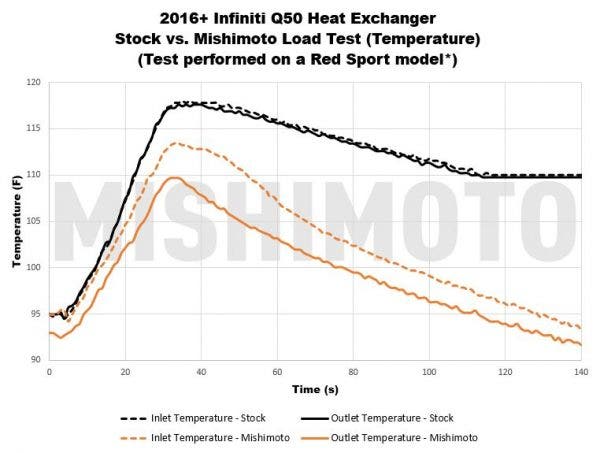
At the peak of our test, the stock heat exchanger outlet spiked to 118°F and leveled off at 110°F, where our heat exchanger design peaked at 110°F and immediately shrugged off the heat. We also noticed that with the stock heat exchanger there was almost no difference in temperature across the core, which is not a good look for your intake air temperatures.
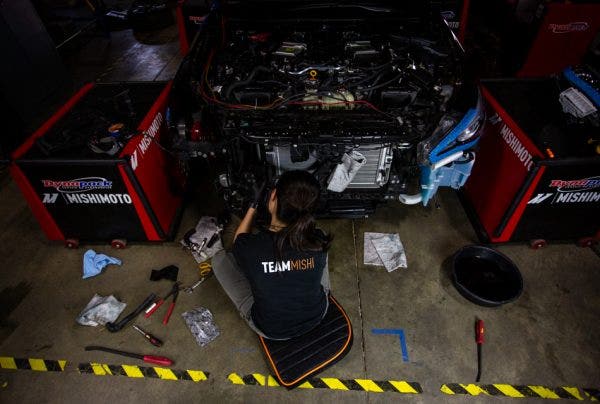

Next up was our heat soak test. This method puts the heat exchangers up against the worst conditions, in that our engineer runs a sequence of 4 back-to-back dyno pulls with no chance to cool off in between. From this test we saw a peak outlet temperature drop of 21°F over the stock unit, with an average 15-20°F difference across the test. Again, no temperature reduction across the core of the stock unit which ended the test at upwards of 140°F. For comparison, our design never went over 120°F on the outlet temperature reading.
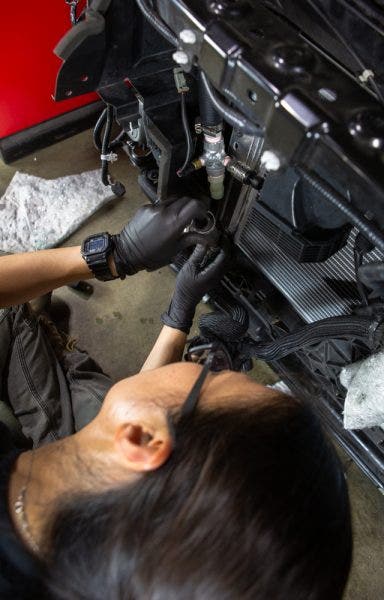
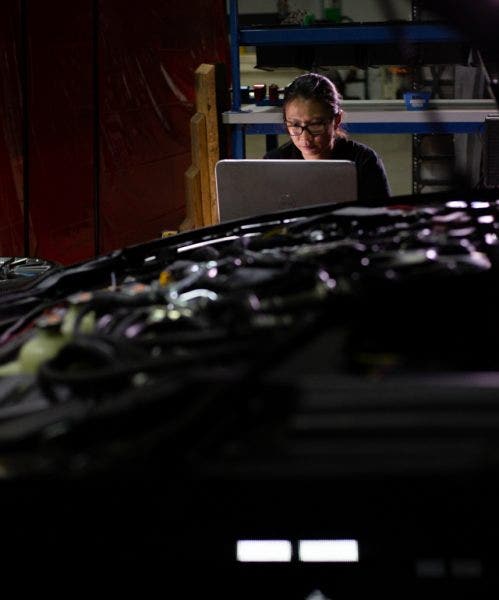
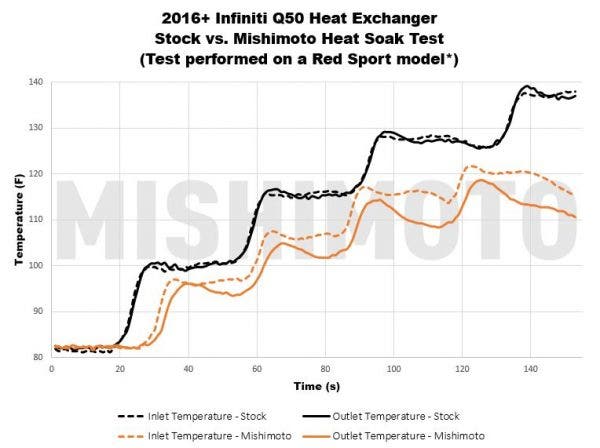
Strongest Link
So, what does this mean for your VR30DDTT's performance? Well, the stock heat exchanger is the weak link in the intercooling system's chain. Without being able to properly dissipate the heat being pulled from the charged air, there's less cooling capacity and your Q50 or Q60 doesn't live up to its potential. Strengthening that link with an improved heat exchanger core keeps the 3.0T cool under boost pressure.

The Mishimoto Performance Heat Exchanger is now available, so get yours today:
Infiniti Q50/Q60 3.0T Performance Heat Exchanger
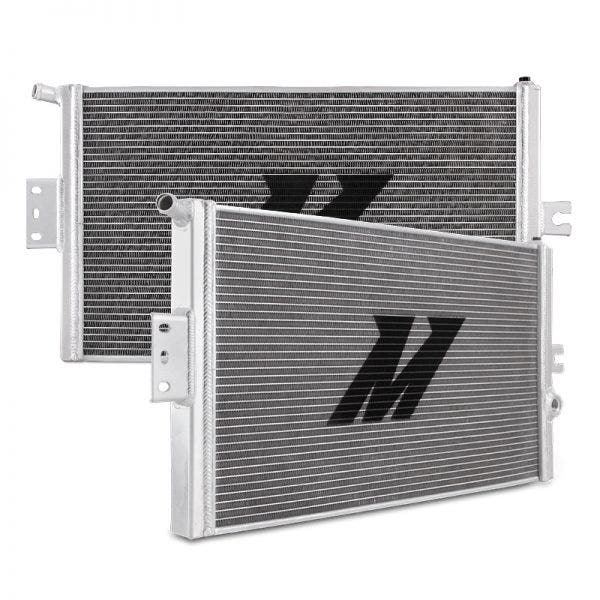
Thanks for Reading!
-Nick




